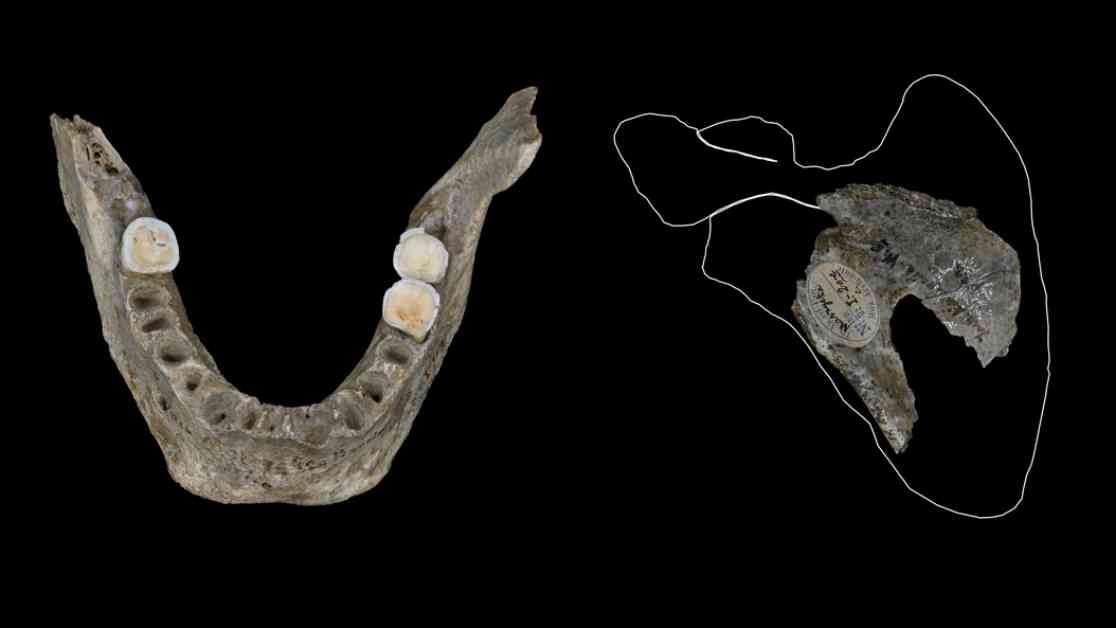Ancient Europeans Engaged in Cannibalism 18,000 Years Ago
A recent discovery in a cave in Poland has shed light on the gruesome practice of ancient Europeans consuming the brains of their dead enemies as an act of war. The remains found in Maszycka Cave near Krakow, Poland, dated back 18,000 years to the Magdalenian period of European prehistory. These remains, consisting of a human jaw and a fragment of a left shoulder blade, revealed disturbing evidence of cannibalism through cut marks and fractures found on the bones.
In a study published in the journal Scientific Reports, researchers detailed their findings on 53 bones from Maszycka Cave, belonging to at least 10 individuals, including six adults and four children. By utilizing advanced 3D microscopy techniques, the researchers were able to identify cut marks and fractures on 68% of the bones, ruling out causes such as carnivorous animals or accidental trampling.
Disturbing Evidence of Cannibalism
Upon closer examination of two dozen skull fragments, the researchers discovered cuts indicative of scalping, defleshing, and the removal of ears and jaws. Moreover, fractures along the cranial sutures suggested a deliberate effort to extract the brains from the skulls. Additional evidence of butchering was found on shoulder, arm, and leg bones, pointing towards a systematic process of extracting edible parts from the bodies.
Francesc Marginedas, the lead author of the study and a doctoral student at the Catalan Institute of Human Paleoecology and Social Evolution (IPHES), emphasized the intentional nature of the cut marks and fractures, underscoring the nutritional exploitation of the deceased individuals. The researchers highlighted the strategic removal of nutrient-rich parts like brains, bone marrow, and muscles immediately after death, indicating a purposeful act of cannibalism.
Interpreting the Motives Behind Cannibalism
Despite the clear evidence of cannibalistic behavior, the exact motives behind this gruesome practice remain ambiguous. Palmira Saladié, a researcher at IPHES and co-author of the study, suggested that the act could have been driven by survival needs, ritual practices, or intergroup violence prevalent during the Magdalenian period. However, the absence of evidence pointing towards famine as a motive challenges the notion of cannibalism for sustenance.
The researchers proposed an alternative explanation for the cannibalistic behavior observed in Maszycka Cave—warfare. The lack of respectful burial practices, coupled with the presence of butchered animal bones alongside human remains, indicated a context of intergroup conflict and territorial disputes. The age profile of the skeletons, resembling that of a nuclear family unit, hinted at a scenario where they were attacked, subdued, and subsequently cannibalized.
The prevalence of cannibalism in other European sites dating to the same period further underscores its significance in Magdalenian culture, whether as a means of honoring the deceased or exerting dominance over adversaries.
Kristina Killgrove, a staff writer at Live Science specializing in archaeology and paleoanthropology, brings to light the enthralling yet macabre world of ancient European practices. Her expertise in unraveling the mysteries of the past through skeletal remains and archaeological evidence adds a human touch to the chilling narrative of ancient cannibalism. As the remnants of a bygone era reveal the dark underbelly of human history, the echoes of our ancestors’ deeds continue to intrigue and unsettle modern minds.










